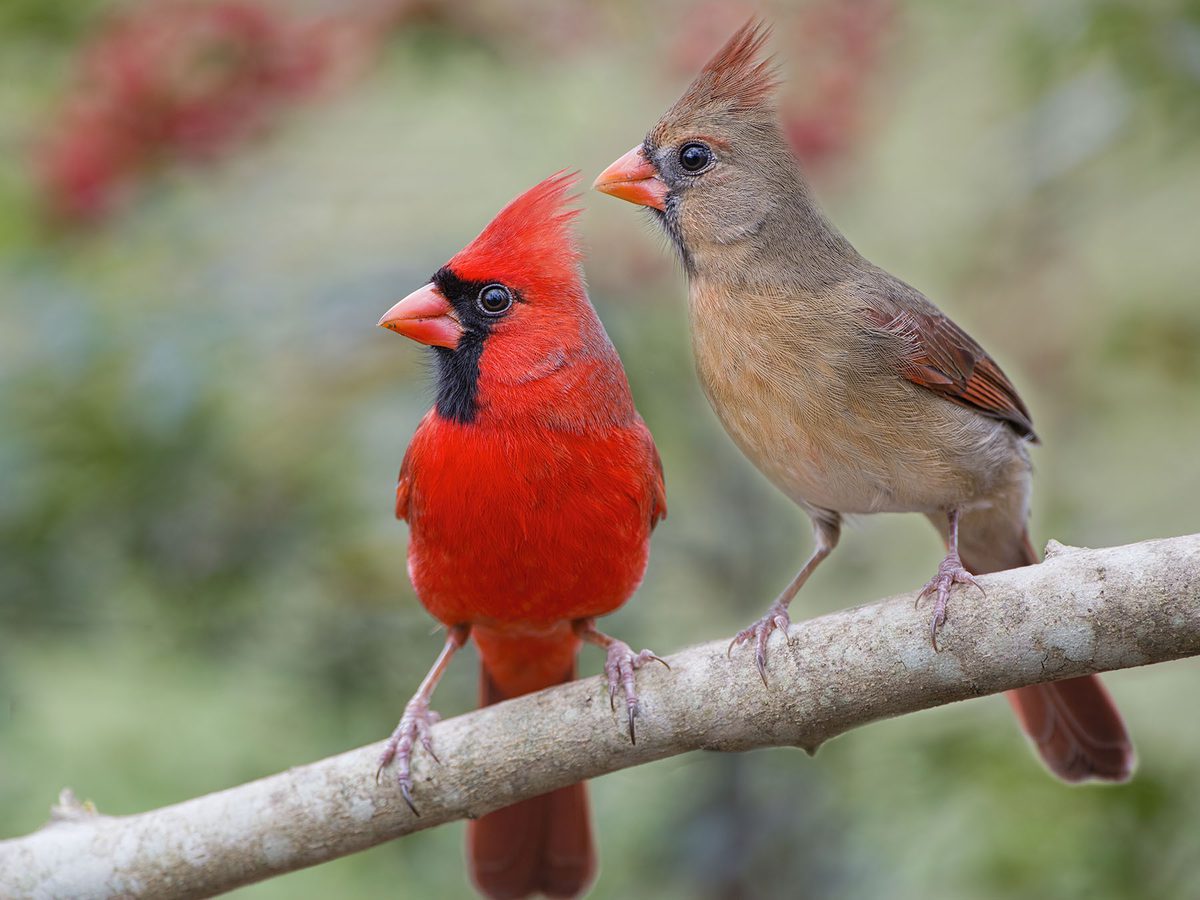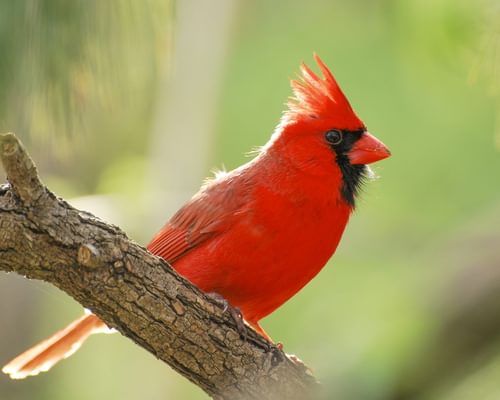Cardinals belong to the Cardinalidae family, of which there are around 53 species in 14 genera. However, when people think of cardinals, they almost invariably think of the Cardinalis genus, which contains the emblematic Northern cardinal which lives across much of North and Central America.
Cardinals are conspicuous birds, especially when there’s more than one together, so what is a group of cardinals called?
Groups of cardinals are called a few collective nouns, but some of the most common is a college of cardinals, a conclave of cardinals, and a deck of cardinals. Cardinals are named after cardinals in the catholic church, who wear bright red gowns and pointy hats which somewhat resemble the crest atop the bird.
Cardinals aren’t particularly sociable, especially in the case of the territorial Northern cardinal. Even outside of the breeding season, groups of cardinals are relatively small, numbering up to 40 to 60 birds at the most.
Read on to learn more about groups of cardinals and their social behaviors!

A pair of Northern Cardinals feeding on seeds
Other terms for a group of Cardinals
- A college of Cardinals
- A conclave of Cardinals
- A deck of Cardinals
- A Kremlin of Cardinals
- A radiance of Cardinals
- A Vatican of Cardinals
There are some rather unique names here, such as a Kremlin of cardinals and a Vatican of Kremlins. A Vatican of cardinals certainly refers to catholic cardinals who adorn bright red robes, but there’s little information on most of these other names. On the other hand, a Kremlin of cardinals might be referencing the Red Square, where the Kremlin is built.
In general, though, you’re most likely to hear a group of cardinals referred to as a flock. A flock is a generic name for any group of birds.

Cardinals generally only become gregarious outside of the breeding season
Do Cardinals flock together in groups?
Cardinals are fiercely territorial in the breeding season, but they do loosen up and drop their guard in the fall and winter.
Like many other birds, cardinals retreat to their mated pairs in the breeding season and isolate themselves in their territories. However, both males and female Cardinals are aggressive and exhibit fierce territorial displays that make their presence rather conspicuous.
In the fall and winter, when the last fledgling has become independent, cardinals become considerably more sociable. They start joining together in small flocks, which gain further traction as other birds join, eventually turning into flocks of up to 60 birds.
Flocks are fluid - some birds seem to cooperate while foraging, while others mind their own business in the flock. They even become more tolerant of other birds and feed alongside juncos, White-throated Sparrows, Tufted Titmice, and American goldfinches, to name but a few.
This is pretty out of character for the fiery cardinal, but rest assured, it’s only temporary!

A small flock of Cardinals at a feeder with Goldfinches
Why do Cardinals flock together in large groups?
Cardinals become more social and gregarious in the fall and winter after the breeding season is finished. In addition, hormonal changes likely make the birds less aggressive, as they no longer need to defend their nests and offspring.
Moreover, food becomes scarcer in winter, and group foraging becomes necessary. In stark contrast to the summer, cardinals may even roost communally in the winter!
Studies observe cardinal flocks in around September at the earliest, and they persist until around February or March, when birds detach to establish territories and build nests.

Northern Cardinals generally become more friendly during the winter and fall
When do Cardinals flock together in groups?
Cardinals flock together in fall and winter exclusively. In the breeding season, they’re highly territorial and don’t tolerate the presence of each other or other birds.
When the breeding season winds down, cardinals become more social and begin grouping up with other cardinals and even other birds like juncos and finches. They form flocks in the day and forage together but also roost communally in the same trees and shrubs.
It’s worth highlighting that not all cardinals grow social in winter. Some pairs remain isolated from flocks and only join them when the flock passes through their territory.
Flocks seem to ‘roll’ from one place to another, with birds joining and leaving in somewhat of a fluid fashion. Birds might only join a flock temporarily. Cardinal flocks gradually disband in early spring, when they fork off with their mates to establish territories.

Close up of a breeding pair of Northern Cardinals
How many Cardinals are in a flock?
Most cardinal flocks are relatively small, consisting of between 5 to 60 birds or so.
Flocks join and disband throughout the day, so the size of the flock is variable. The size of the flock varies from region to region, and flocks later in the winter tend to be smaller as birds disband to establish territories.
Do Cardinal families stay together?
Pairs of cardinals often form life-long pair bonds and remain together across consecutive breeding seasons.
Young Cardinals join flocks at the end of summer, where they gain independence. They don’t stick together in kinship groups.

Close up of a female Cardinal perched in a plum tree
Do all Cardinals flock together?
Not all cardinals join flocks in the winter. Some remain isolated in their pairs and don’t join a flock or only join if a flock happens to be passing nearby.
Flocks are quite fluid, and birds come and go as they please. In early spring, cardinals start detaching themselves from flocks to establish territories. The default stance of these birds is territoriality - they’re not the most social birds, even in the winter.
Cardinal flocks are probably just an act of convenience rather than desire - food is scarcer in winter, so most birds flock to the same food sources.

Male Northern Cardinal perched in a snow-covered tree during the winter
Do Cardinals fly in groups?
Cardinals don’t migrate, but they do disperse from their breeding grounds and often do this in small flocks.
Flocks ‘roll’, with birds coming and going as the flock moves throughout the course of the day. Some flocks travel 700m to 900m per day.
What does a flock of Cardinals mean?
Cardinals have strong spiritual connotations that are mostly positive. They signify strength, courage, and curiosity. Groups of cardinals are beautiful courtesy of the male’s bright plumage, which makes groups very colorful indeed.

